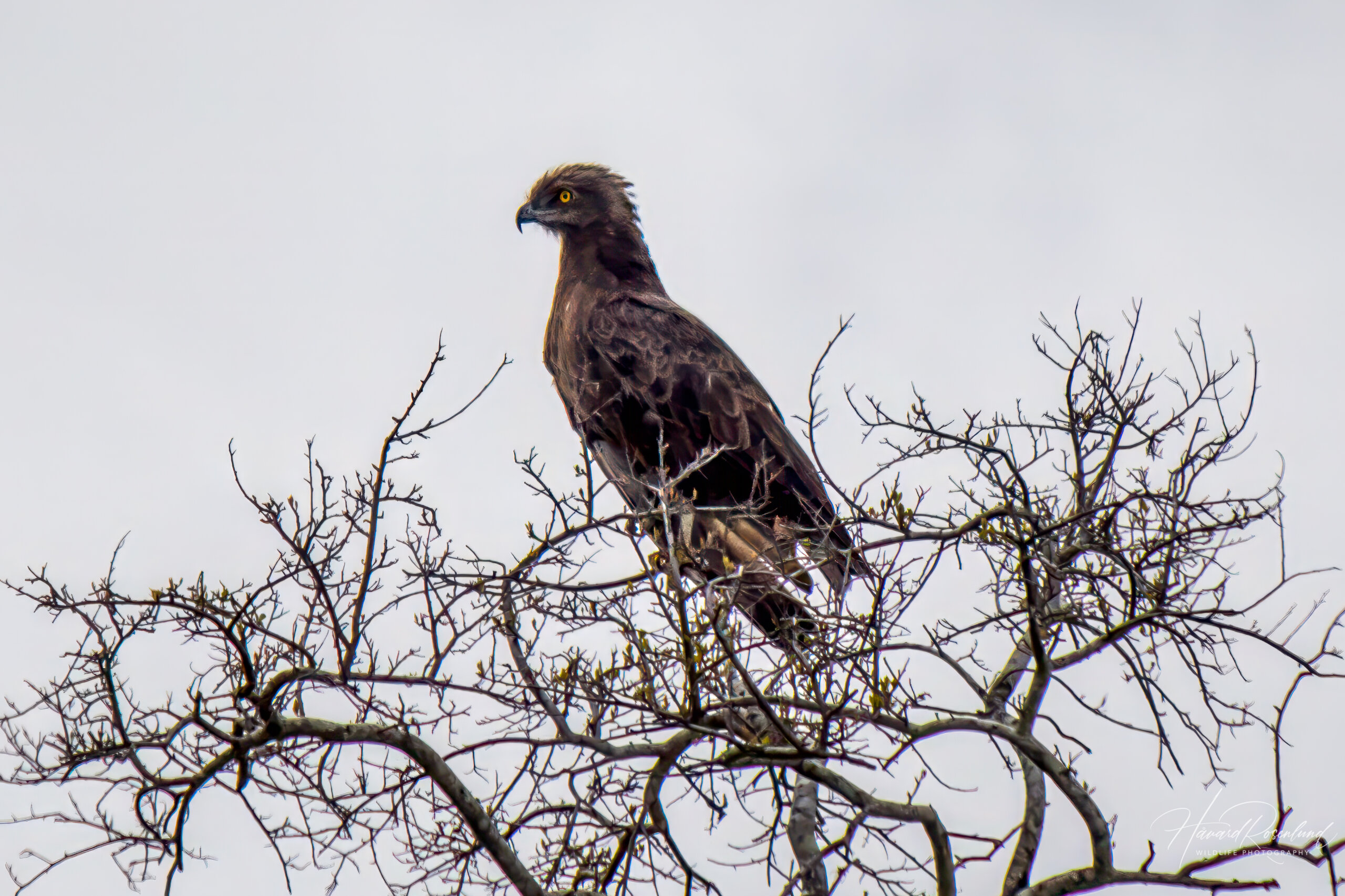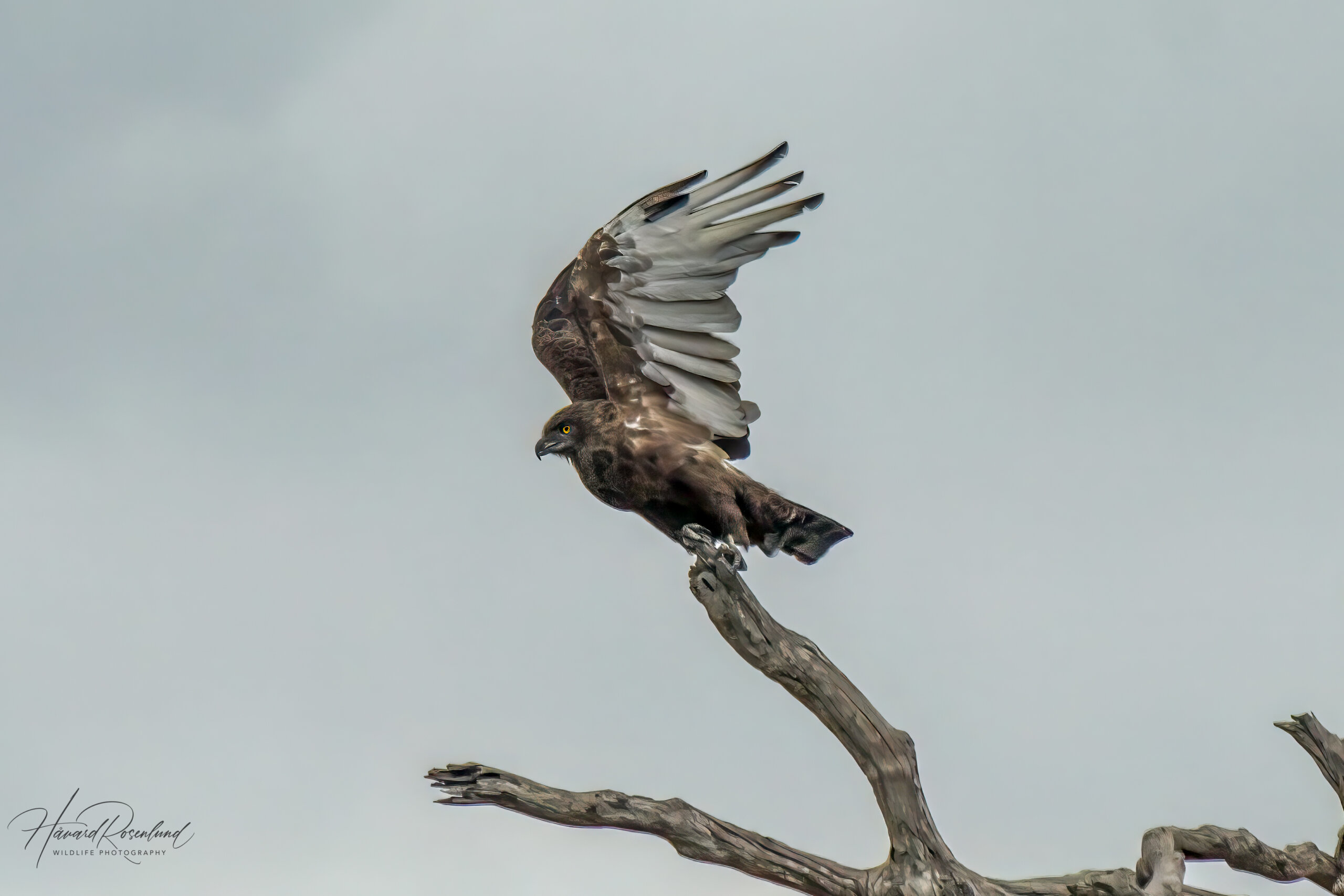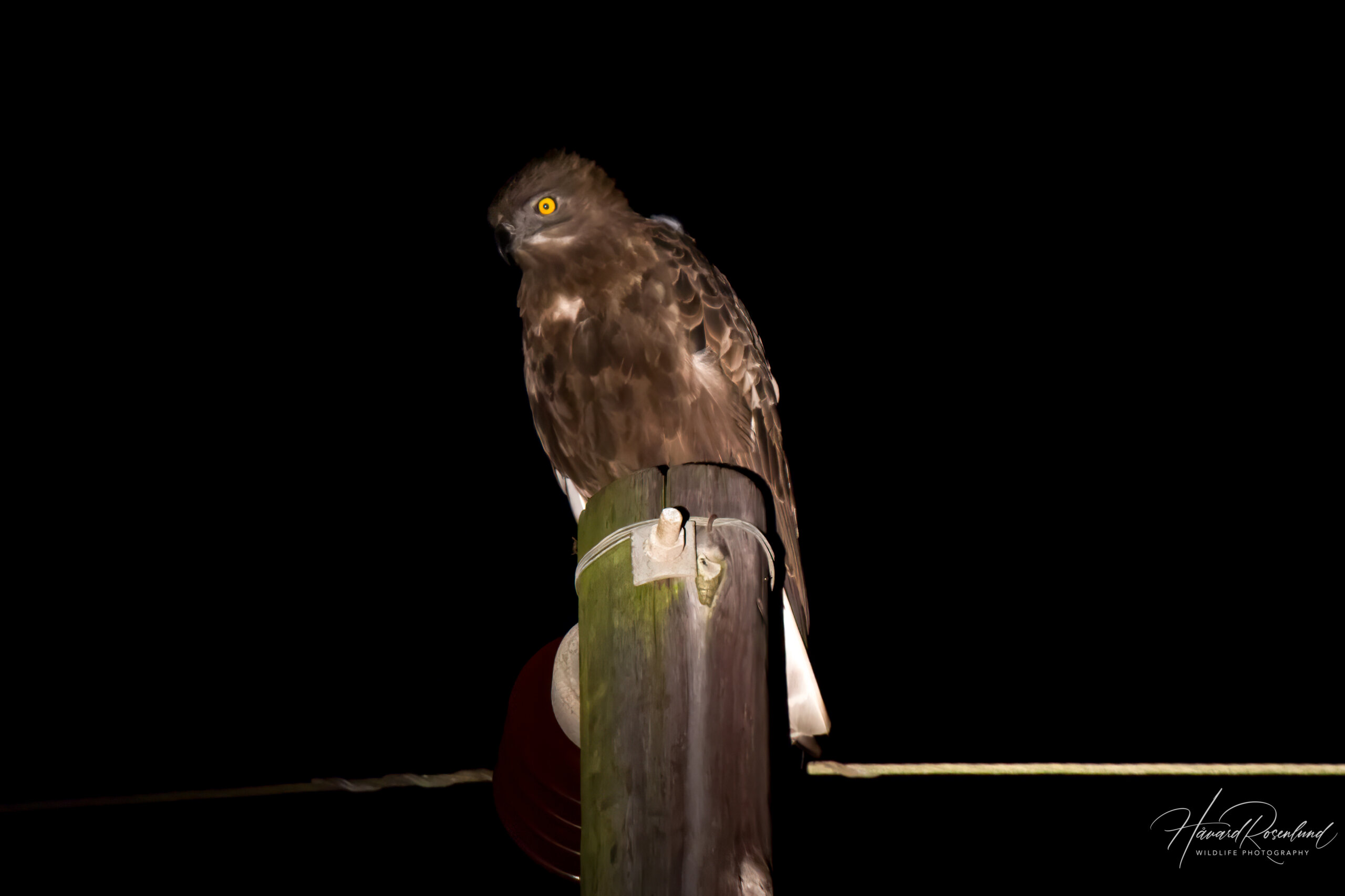Description
The brown snake-eagle (Circaetus cinereus) is a large and fairly common species of snake-eagle. It reaches lengths of 70-80 cm (27.5-31.5 in) and a wingspan of 160-170 cm (5ft 3 in – 5ft 7 in). It has a uniform brown plumage, yellow eyes, a black beak, and grey ceres and legs. It is often seen in an upright position and the feathers on the top and back of the head often gives the head a triangular edge, making its profile easy to recognize when perched. Tail wings are barred white and brown, and underwings are brown on the coverts and white on the flight feathers. Juveniles are lighter in coloration, sometimes almost white with darker wings and backside.
Diet & habitat
Brown snake-eagles prefer dry bushy and thorny landscapes. Woodland savannas and thorny scrublands are typical natural habitats, but it can also be found on cultivated land. It generally avoids open grass plains and dense forests. It scans and hunt for prey from a perch and will swoop down to catch its prey on the ground, either crushing its spine or its head on impact. Snakes take up the largest portion of the diet, and it will catch highly venomous snakes. Their thick-skinned legs protect them from bites, but they are not immune to the venom. Other lizards, as well as small mammals and birds are also included in the diet.
Nesting
It is a monogamous bird, and a solitary nester. Breeding season changes with geographical location. Both sexes take part in building the nest, which will be made of sticks and situated in the canopy of flat-topped trees. A breeding pair will quite often take over and fix deserted nests made by other birds of prey, such as the tawny eagle. The female lays only one egg, which she incubates for 48-53 days, while the male provides food. She will brood the chick constantly during the first ten days before gradually ending the brooding until the chick is around 35 days old. After 95-112 days the chick leaves the nest and will only become fully independent a week to two months later.
Status
The brown snake-eagle has a very wide distribution and is locally very common in certain areas with suitable habitat. There are no perceived threats at the moment, and it is listed as least concern on the IUCN Red List.








